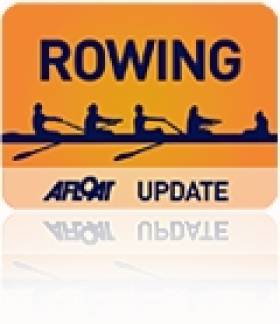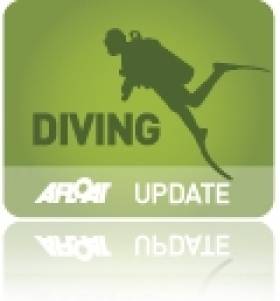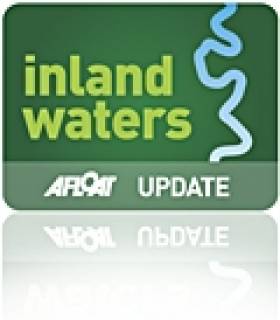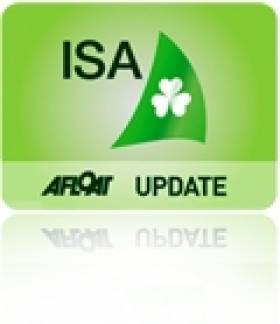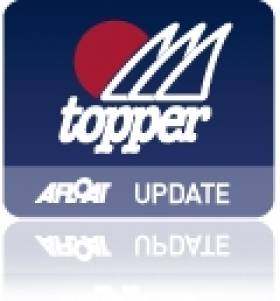Displaying items by tag: Carlow
Junior Eight Best at St Michael's Head of the River
#ROWING: The junior A eight from St Michael’s were the fastest crew at the St Michael’s Head of the River at O’Brien’s Bridge today. Carlow’s intermediate four were just three seconds slower. The St Michael’s senior eight, rowing in unfavourable conditions later in the day, could only manages sixth place overall. The UCD B eight were the fastest women’s crew.
St Michael’s Head of the River, O’Brien’s Bridge, Saturday (Selected Results)
Overall: 1 St Michael’s A junior 18 eight 10 minutes 52 seconds, 2 Carlow intermediate four 10:55, 3 St Michael’s inter eight 10:56, 4 Commercial senior quadruple sculls 10:57, 5 Commercial Club Two eight 11:05, 6 St Michael’s senior eight 11:09.
Men
Eight – Senior: St Michael’s 11 minutes 9 seconds. Inter: St Michael’s 10:56. Club Two: Commercial A 11:05. Junior 18: St Michael’s A 10:52. Jun 16: Col Iognáid 11:21. Masters: Fermoy 11:39.
Four – Senior: St Michael’s 11:11. Inter: Carlow 10:55. St Brendan’s Junior 18, coxed: Col Iognáid 13:14. Masters: Galway 13:23.
Pair – Junior 18: Athlunkard 13:04.
Sculling
Quadruple – Senior: Commercial 10:57. Inter: Garda 11:10. Novice: St Brendan’s (coxed) 16:21. Club Two: Clonmel 12:44. Jun 18: Presentation 11:33. Jun 16: Commercial A (coxed) 12:07. Masters: Shandon 11:53.
Double – Senior: Castleconnell/Portadown 11:33. Inter: Presentation 12:05, Killorglin 12:05. Jun 18: Fermoy B 12:31.
Single – Senior: St Michael’s (D O’Connor) 12:19. Inter: Garda 12:26. Novice: Castleconnell (A Mozdzer) 14:22. Jun 18: Waterford (A Goff) 12:38. Jun 16: Commercial (E Meehan) 13:43. Masters: Cahir 13:22.
Women
Eight – Senior: UCD B 11:45. Novice: Commercial C 13:19. Club Two: Galway 12:56. Jun 18: Shannon 11:47. Jun 16: Col Iognáid 14:29. Masters: Shannon 14:58.
Four – Inter: Shannon (coxed) 13:40. Novice: Fermoy B (coxed) 13:51. Jun 18: Carlow A 13:07. Jun 16: Cork 13:06. Masters: Tribesmen 14:58.
Pair – Senior: Shannon A 13:43. Inter: Univ of Limerick 14:49. Jun 18: Shannon 14:37.
Sculling
Quadruple – Club Two: Athlunkard (coxed) 13:02.
Double – Inter: Carlow 14:13. Jun 18: Cork A 14:18.
Single – Inter: St Michael’s (A O’Sullivan) 14:34. Novice: Fermoy (E Kinsella) 17:24. Jun 18: Fermoy (S Cotter) 14:59. Jun 16: Workmans (S Burns) 15:24.
Carlow's A Lock For Ireland's Premier Diving School
#Diving - A giant glass-sided water tank will be a feature of the new diver training facility that's currently under construction at Webster's Lock in Carlow town, as the Carlow Nationalist reports.
The new diving school on the River Barrow will be the new permanent home of the Carlow/Graiguecullen Sub Aqua Club and has been more than three years in the making.
According to the Irish Independent, phase one of the project is set to be completed by the New Year, and will see the old lock house transformed into a state-of-the-art training facility, with the glass-sided tank allowing trainees to watch divers in action from a viewing gallery.
When completed, the scheme will also include special lighting to facilitate night dive training, copious storage space and a compression zone.
It's hoped that the new centre will facilitate year-round training for divers across Ireland, both recreational divers and those aspirating for professional certification - the latter invaluable when volunteer divers are required for search and rescue efforts.
The Carlow Nationalist has more on the story HERE.
Country Home On The River Slaney At A Bargain Price
#Property - A mid-Georgian country house on 50 acres in Co Carlow with its own angler's chalet on the River Slaney is attracting much attention from overseas for its knock-down price.
The Irish Times is singing the praises of Ballynoe House, a two-storey home with seven bedrooms and various additional outbuildings set in "beautiful parkland with good pasturage" - perfect for its owners Willem and Anneke Savelkouls who bred horses and kept sheep on the land.
The house itself comprises 850 sqm of floor space, the ground floor featuring a sizeable reception hall plus two high-ceilinged reception rooms with large windows, an open plan kitchen/living area and a study.
Upstairs can be found a master suite, five family bedrooms sharing two bathrooms and a guest suite with shower. Another bedroom is located in the basement, which features a games room, wine cellar, office space and a housekeeper's apartment.
Outside, the walled garden at the rear includes a swimming pool and pavilion added by noted architect Sam Stephenson when he was a resident in the 1970s, as well as a disused tennis court that a resurfacing would bring bang up to shape.
One big selling point is the property's prime waterfront location along a 2km stretch of the River Slaney, providing for some top-class salmon and trout angling.
Previously on the market for almost €4 million, Ballynoe House today is a snap for all you'll get at an asking price of just €1.24 million.
Viewing is by appointment only with agents Sherry FitzGerald. The Irish Times has more on the property HERE.
On the slightly more modest end of the scale, Collerans Auctioneers in Galway are handing the sale of 114 Ocean Wave in Salthill, a four-bed detached home close to the famous promenade for €460,000.
According to the Galway Advertiser, the house offers "beautiful views" of Galway Bay from the master bedroom on the first floor (completed by three en-suites).
On the ground floor, generous living and office space plus separate entrances lend the property to use as a GP practice or similar.
River Barrow Has Potential for Tourism
#INLAND WATERWAYS - A new study on the River Barrow and its environs recommends the development of "activity hubs, tourist trails and new angling and boat facilities", The Irish Times reports.
Waterways Ireland and Fáilte Ireland commissioned the Barrow Corridor Recreational, Tourism and Commercial Identification Survey to find ways to exploit the area's "undeveloped potential" for tourism.
The survey covered the river itself as well as its estuary and the Barrow branch of the Grand Canal. Its findings pointed to a number of areas where development is already being actioned, such as in boating and cruising, nature and wildlife, and angling.
Environment Minister Phil Hogan, who launched the study in Carlow yesterday, hailed the co-operation of the agencies and county councils involved.
The Irish Times has more on the story HERE.
Sailing Body Elects First Female President
In one of her last official functions as Minister for Sport, outgoing local TD Mary Hanafin attended the Irish Sailing Association's annual Ball last Saturday in the Royal Marine Hotel in Dun Laoghaire.
Attended by 315 people the black tie ball featured an awards ceremony that has been hailed 'a great success' by the association.
On Saturday afternoon the association elected a new President, Niamh McCutcheon, the first female ISA President since the organisation was founded in 1945.
A collection in aid of the RNLI raised over €2,250.
Award details below:
ISA Sailing Achievement of the Year
This award is presented by the ISA to recognise the outstanding achievement in a sailing craft by an Irish person or in Ireland during 2010.
Winner: Nicholas 'Nin' O'Leary, Royal Cork Yacht Club
Nicholas' achievements included narrowly beating his father Anthony at the ISA All Ireland Championships in 2010 by just a single point after a nail-biting finale in difficult conditions off Kinsale in November. The win made it three-in-a-row for this remarkable young 24 year old sailor - the only person to achieve this in the 64 years of the event's history.
ISA Volunteer of the Year
This award is given to a member of an ISA affiliated club or class who has made a significant voluntary contribution to their sport during 2010.
Winner: Brian Craig, Royal St. George Yacht Club.
Brian has been nominated by the Royal St. George Yacht Club for the vital role he has played in developing sailing in Ireland and specifically Dun Laoghaire over the past 40 years. His most recent success was winning the bid for Dun Laoghaire to host the 2012 ISAF Youth Worlds.
ISA Youth Sailor of the Year
This award is presented by the ISA to recognise the outstanding achievement by a sailor competing in ISA Performance Pathway boats during 2010.
Winner: Finn Lynch, Blessington Sailing Club
Placing 2nd overall at the Topper World Championships in 2010 left the Carlow sailor in good stead for a Youth Sailor nomination. A determined sailor and strong character, it's clear that with these strengths Finn has the potential to go far in our sport.
ISA Instructor of the Year
This award recognises the role instructors have in providing access to our sports. The final 5 have been nominated by their students with the ultimate winner selected by an ISA judging panel.
Winner: Aine Carroll, Rush Sailing Club
Aine has been an ISA instructor for the last 11 years, instructing both adult and junior sailors in Rush Sailing Club. A keen Mermaid sailor, her love of sailing, her enthusiasm for the sport and willingness to give her time to her sailors have been infectious and remarkable. Apparently the kids at the club think she is a 'legend' and 'cool'!
ISA Training Centre of the Year
The face of ISA water sports to thousands of participants. The best in 2010 as nominated by their students.
Winner: University of Limerick Activity Centre
Situated on the sheltered shores of Lough Derg, University of Limerick Activity Centre has been in operation for over a decade. ULAC provides a varied programme of adventure activities to the general public. The University of Limerick Activity Centre runs ISA courses in sailing dinghies, windsurfers, powerboat as well as emergency care training courses.



























